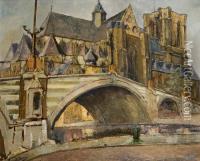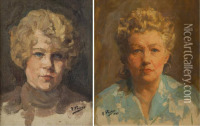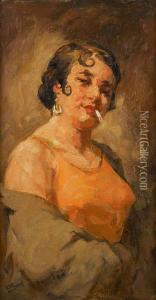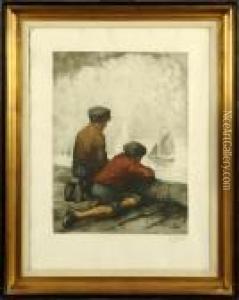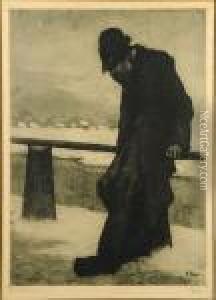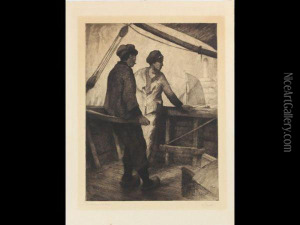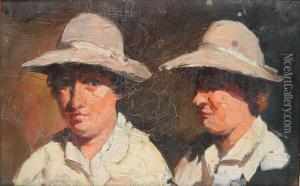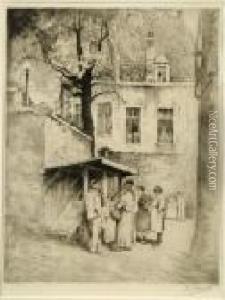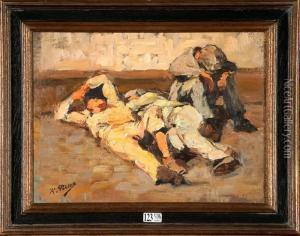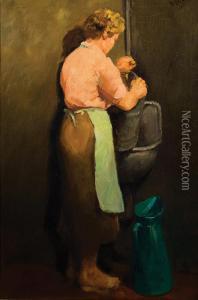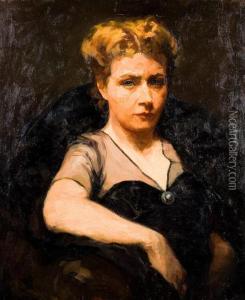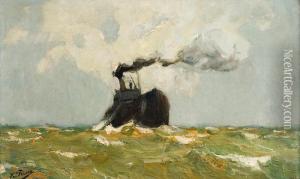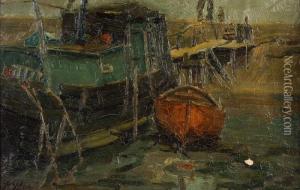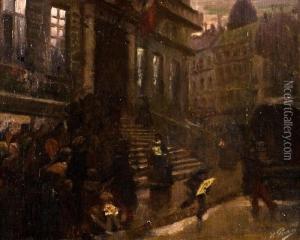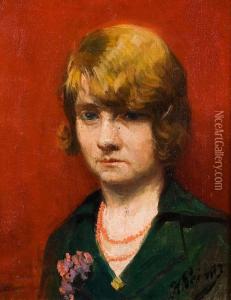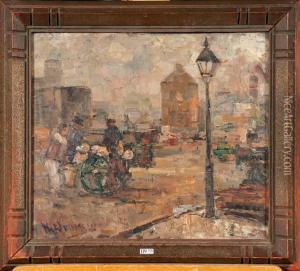Kurt Peiser Paintings
Kurt Peiser was a Belgian artist born on July 26, 1887, in Antwerp, Belgium. He was known for his vivid portrayals of the life of the working class and the atmosphere of the port city where he was born. Peiser's work often highlighted the struggles and daily lives of fishermen, laborers, and the destitute, offering a compassionate and sometimes gritty window into the lives of those on the margins of society.
Peiser received his artistic training at the Royal Academy of Fine Arts in Antwerp. His style combined elements of realism and expressionism, with a focus on social commentary. His paintings and etchings were characterized by strong brushwork and a powerful use of color, which he employed to evoke the mood and character of his subjects.
Throughout his career, Kurt Peiser remained deeply committed to portraying the human condition. He was particularly moved by the hardships faced by the lower classes, and he used his art as a means to shed light on their plight. Despite the often somber themes of his work, Peiser's paintings are imbued with a sense of empathy and human dignity.
Peiser's contribution to Belgian art was significant, and his work has been exhibited widely throughout the country. He was a member of several artist groups and associations, which played a crucial role in the Belgian art scene during the early 20th century.
Kurt Peiser's life was marked by the turbulence of the times, including the impact of both World Wars. Despite these challenges, he continued to work and exhibit throughout his life. Peiser passed away on May 30, 1962, in Brussels, leaving behind a legacy as one of Belgium's most poignant chroniclers of the human experience. His works remain a testament to his compassion and artistic skill, capturing the essence of an era and its people with honesty and authenticity.
